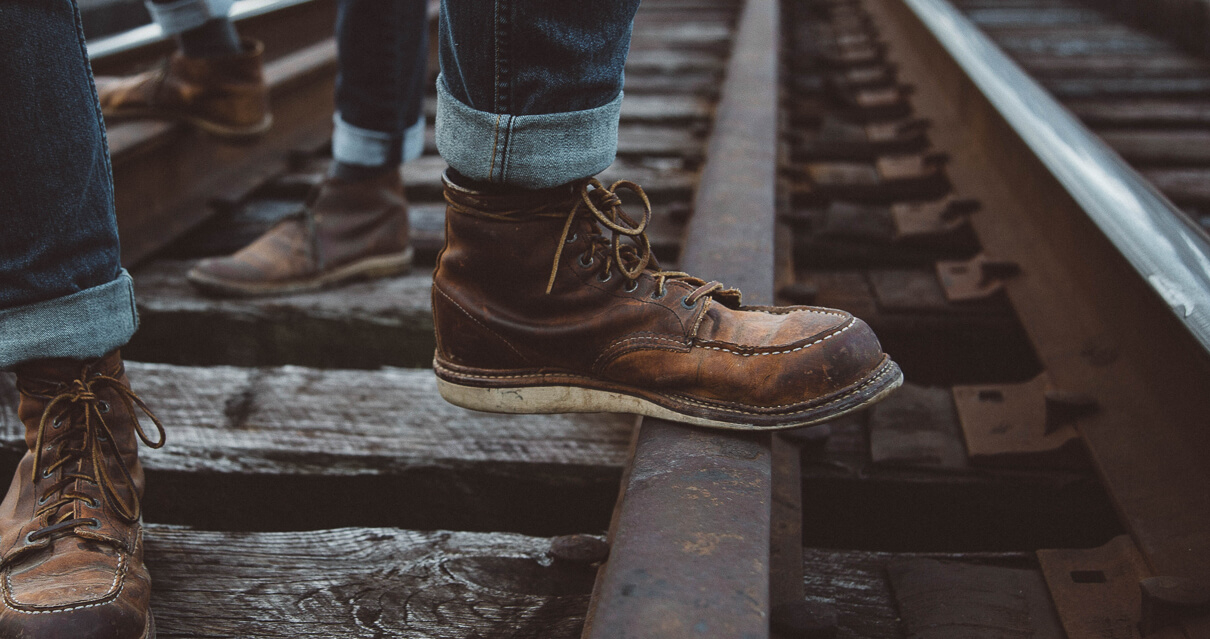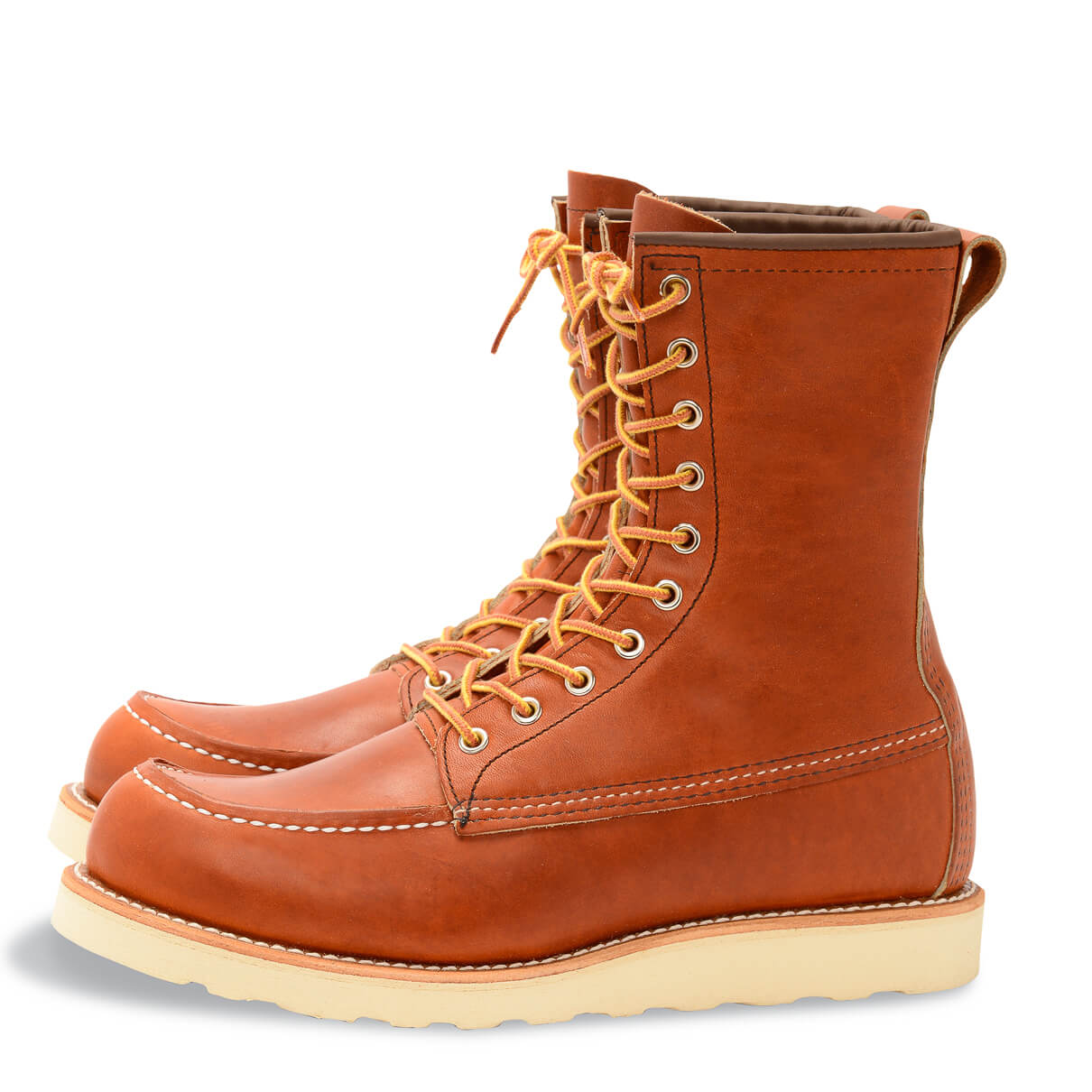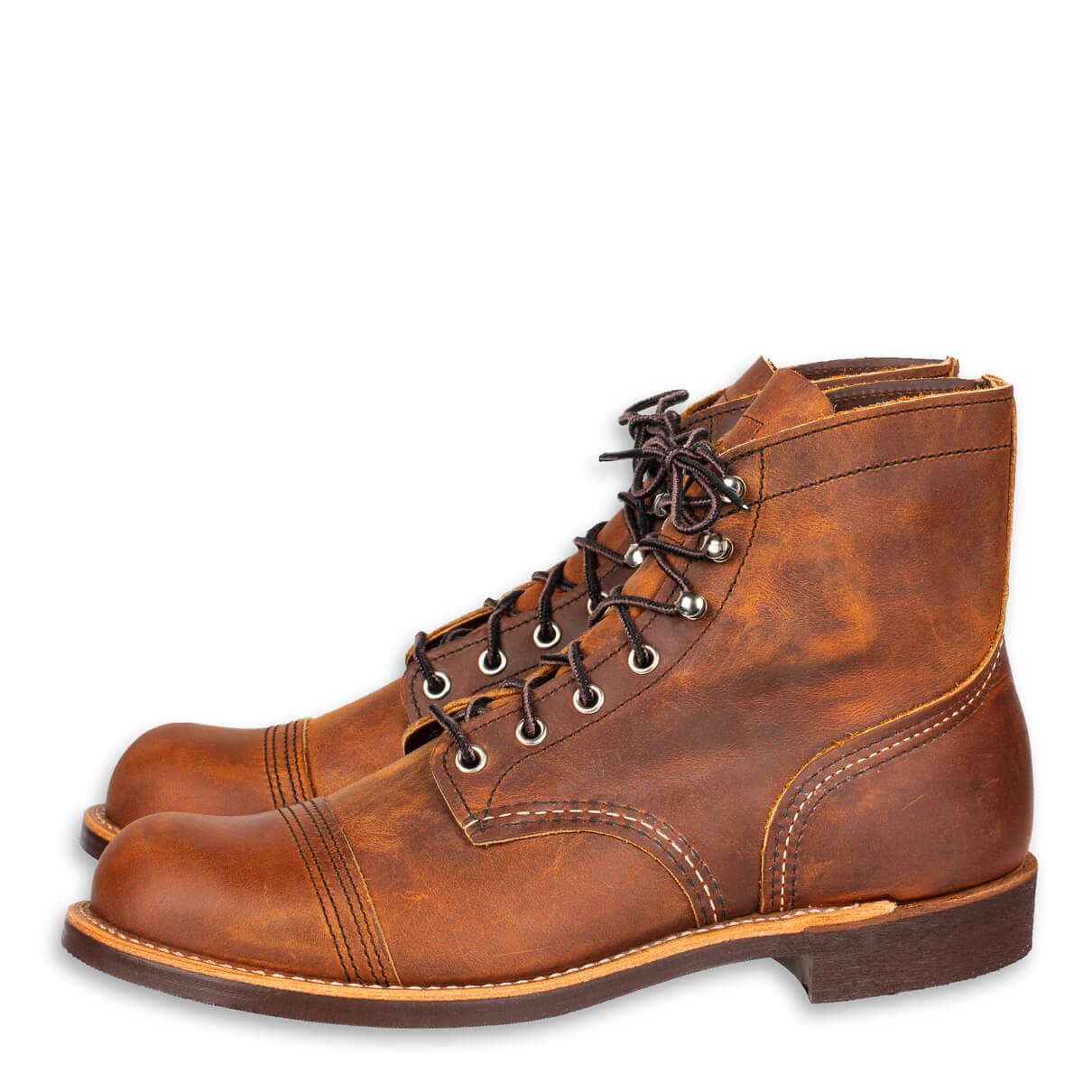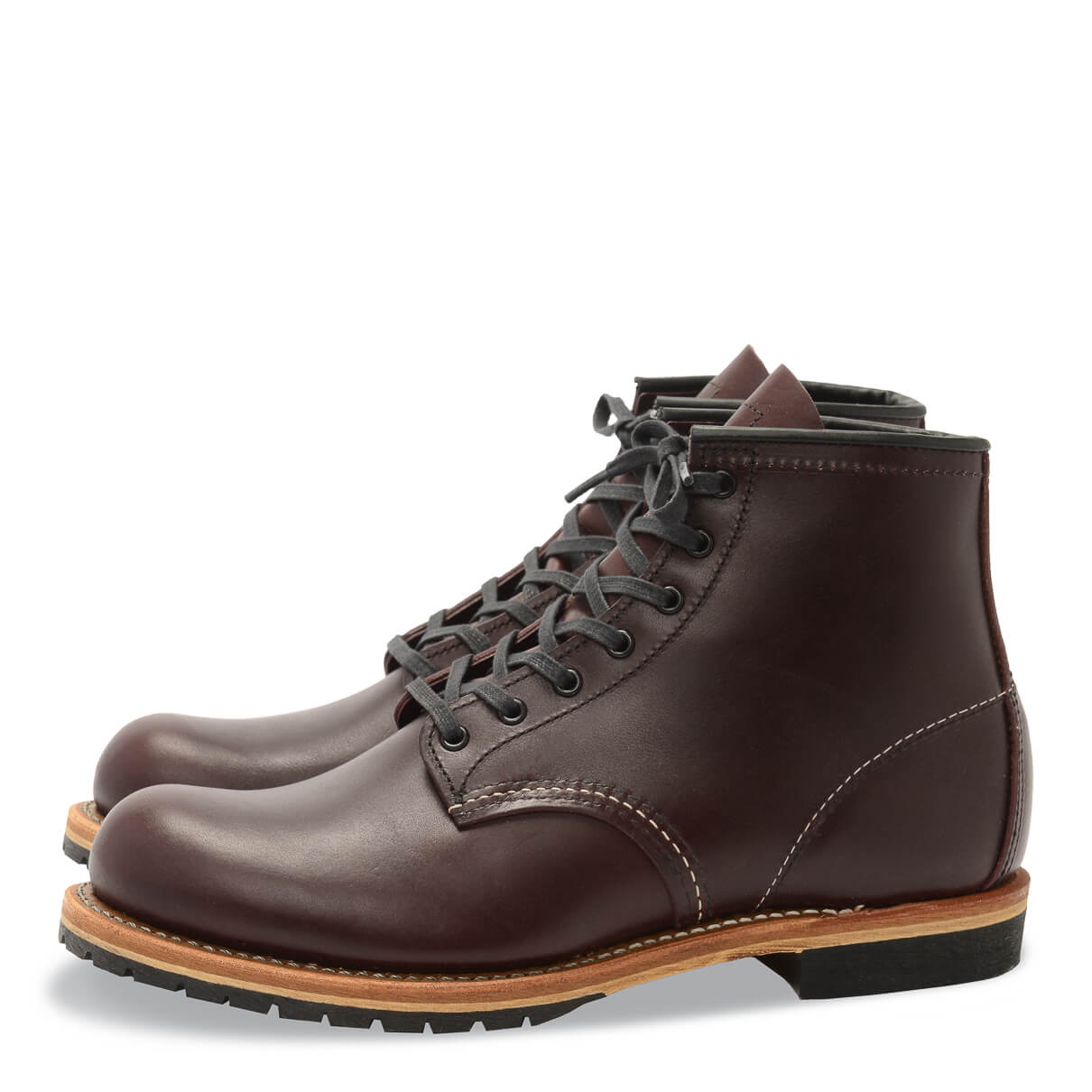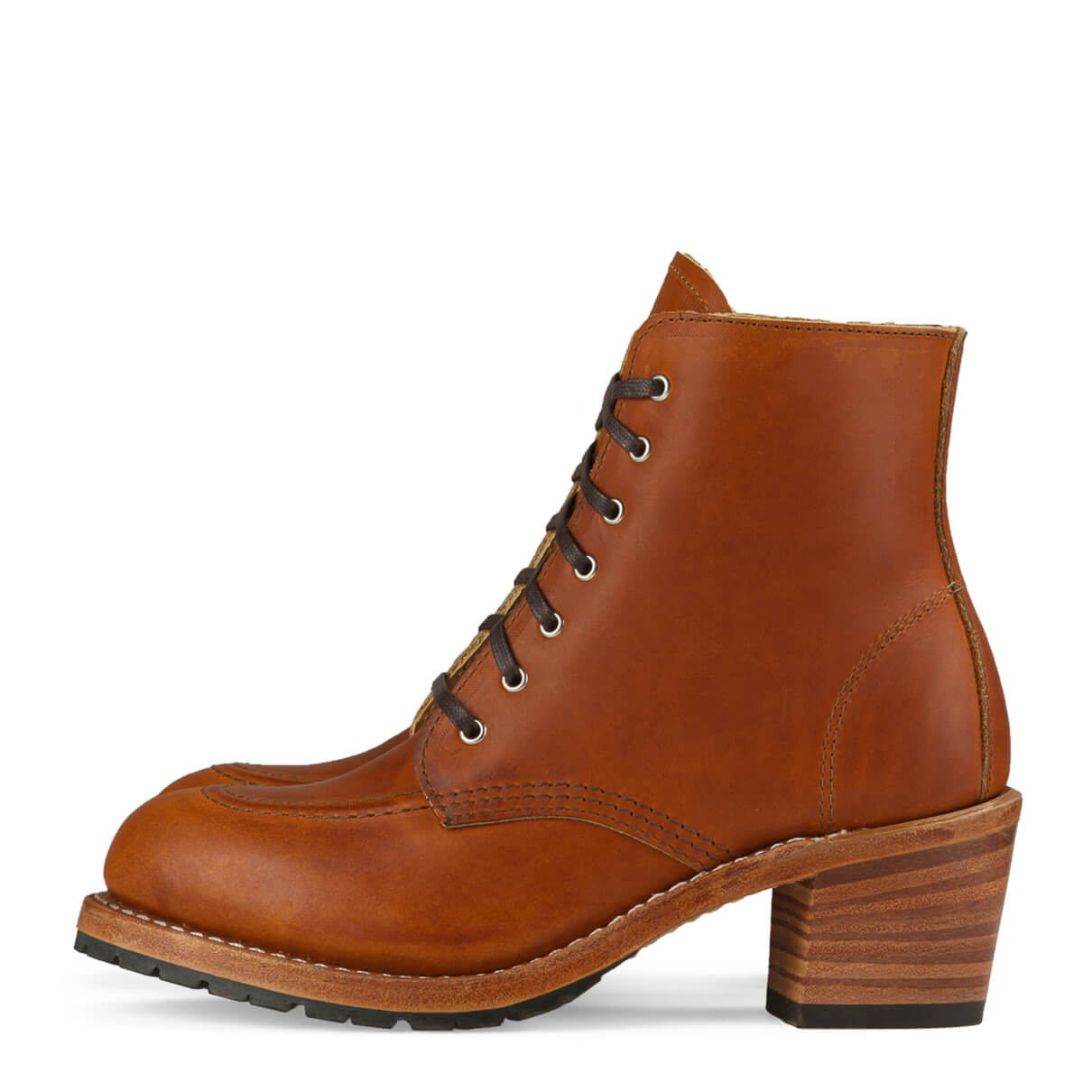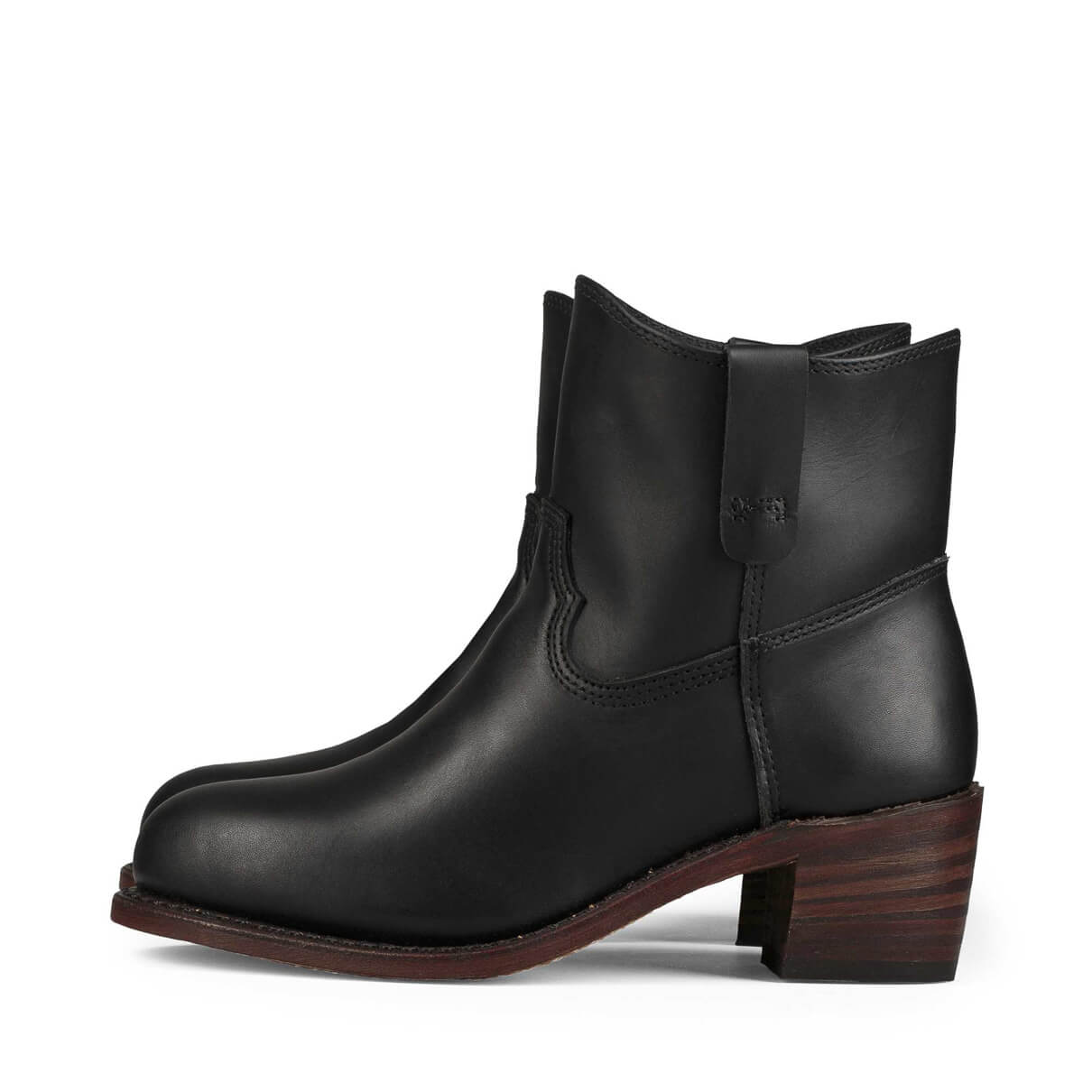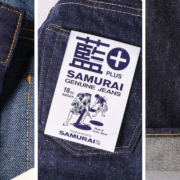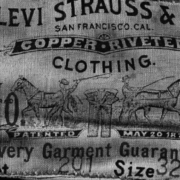If you are a menswear veteran, or if you are new to the game, Red Wing Shoes is a name you will know and love. Let’s go deeper into the long and illustrious history of this archetypal boot brand.
Get 100 raw denim geeks into a room, then add 50 menswear aficionados, sprinkle in just enough hipsters to make it overly hairy and some bikers to make it interesting. Now ask them what their first good boot was. I will bet my bottom dollar that 90% of them will say a pair of Red Wings.
What makes an icon?
But what is it that makes these boots so iconic? Put simply, they have been doing it for a good long time. In that time the company has come up with designs that just defined a certain type of footwear. Combine this with the fact that you just don’t find boots of this quality for that kinda money… boom, you have a recipe for everyone’s gateway drug into the world of quality footwear.
A walk down history lane
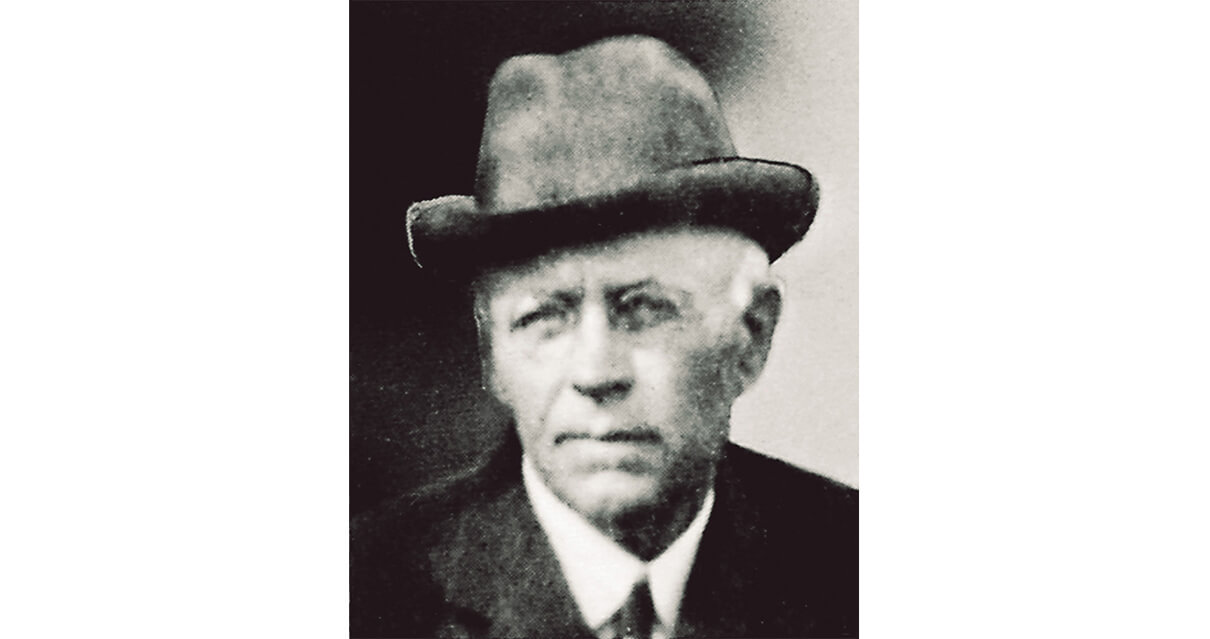
Charles Beckman, Red Wing Shoes founder. Image courtesy of Red Wing Heritage.
Like all things reliable, dependable and sensible, Red Wing Shoes are German. Or well, founded by a German. Jürgen Böckmann was born in the Northern German city of Hesedorf. He upped sticks and moved to the US at some point around the end of the 18th century and changed his name to Charles Beckman. Mr Beckman saw where there was money to be made and went, drawn to the town of Red Wing Minnesota. Nowadays, this may seem like an odd choice, even though I am sure it is and was lovely. But back then the town was booming.
In dire need of good boots
The vast and fertile land surrounding the town of Red Wing was churning wheat. So much wheat in fact that 1873, the town of Red Wing was deemed the most efficient producer of wheat in the land. To do this required a lot of land for sure, lots of farmers to farm, who each had two feet in dire need of good boots.
Shockingly shoddy shoes
Always the pragmatist, Beckman intended to be the man who made these boots. He had spent time as a shoe merchant and this has taught him that many of the farmers, railroad workers, miners and the like were walking about in shockingly shoddy shoes. He saw that each industry needed its own boot with specific features tailored to their needs. Recognising the untapped potential of this idea, he and 14 other investors got together and in 1905, Red Wing Shoes was founded.
Built of a task
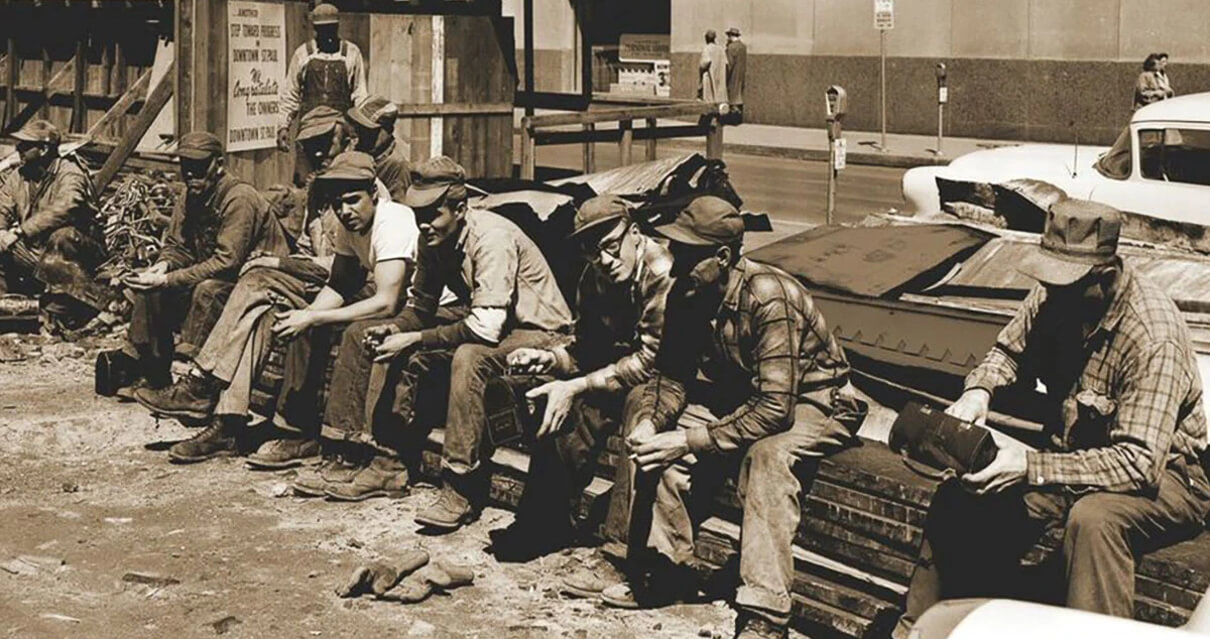
Image courtesy of Red Wing Heritage.
Red Wing Shoes offered a never before seen array of industry-specific styles and all in a wide variety of sizes. Boot making on an industrial scale like this was an innovative concept as was the use of state of the art (for the time) technology such as rubber soles and “manure proof leather”. They combined this with the very best quality in terms of manufacture. The company grew from strength to strength over the next 10 years and a new factory was opened in 1912 increasing the production capability fourfold.
Boots for fighting men

Image courtesy of Red Wing Heritage.
Things changed when World War I broke out. Farmers were now soldiers and off fighting. Women now manned the Red Wing Shoes factories making boots for their boys overseas. The boot they were making was the Munson, another innovation in terms of footwear. It had to “fit all feet”. And it did, the Munson was such a success that it stayed in production well after the war and influences boot design to this day.
Lasting legacy
Other modern-day standards the Red Wing guys came up with are things like, the use of rubber for the soles of boots, steel toecaps and oil resistant leather. All this meant that Red Wing Shoes saw success in a wide variety of industries. They came to be relied upon for their attention to detail and second to none build quality.
Back to war
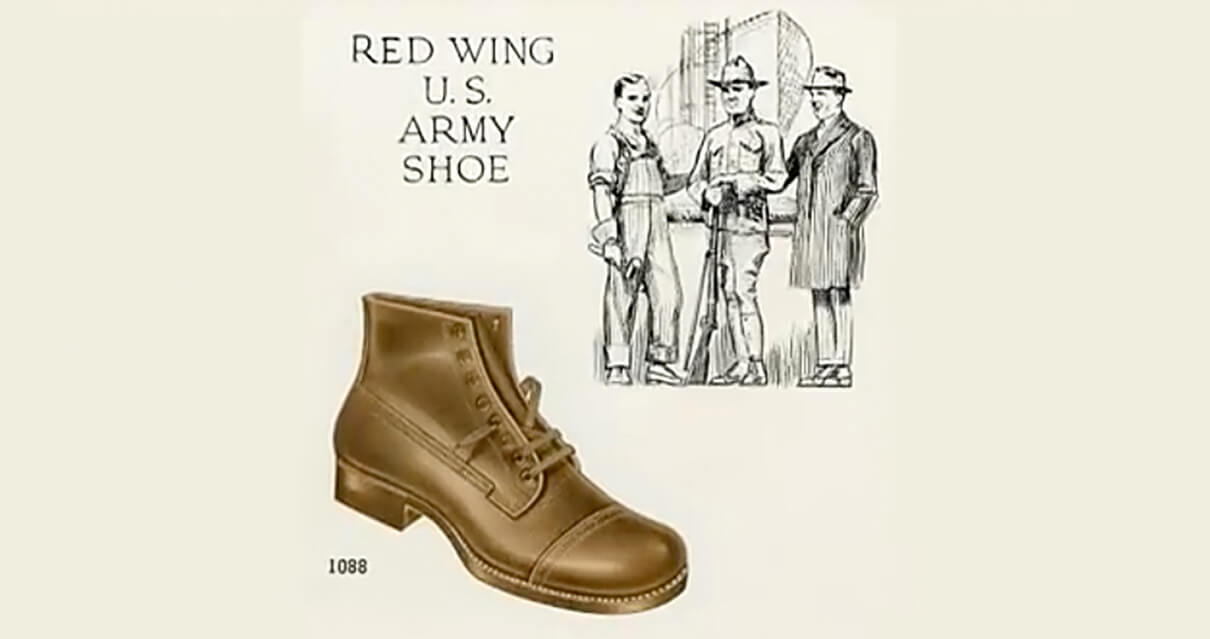
Image courtesy of Red Wing Heritage.
This saw Red Wing Shoes through the Wall Street crash in the 1930s and the great depression that followed where many companies floundered. Then it was sadly time to send soldiers abroad again. World War II was raging in both the European and Pacific theatres. Good boots were badly needed. Red Wing Shoes proved themselves yet again as a company that could be trusted to produced high volume, high-quality products within stringent quality controls.
The birth of the classic 877
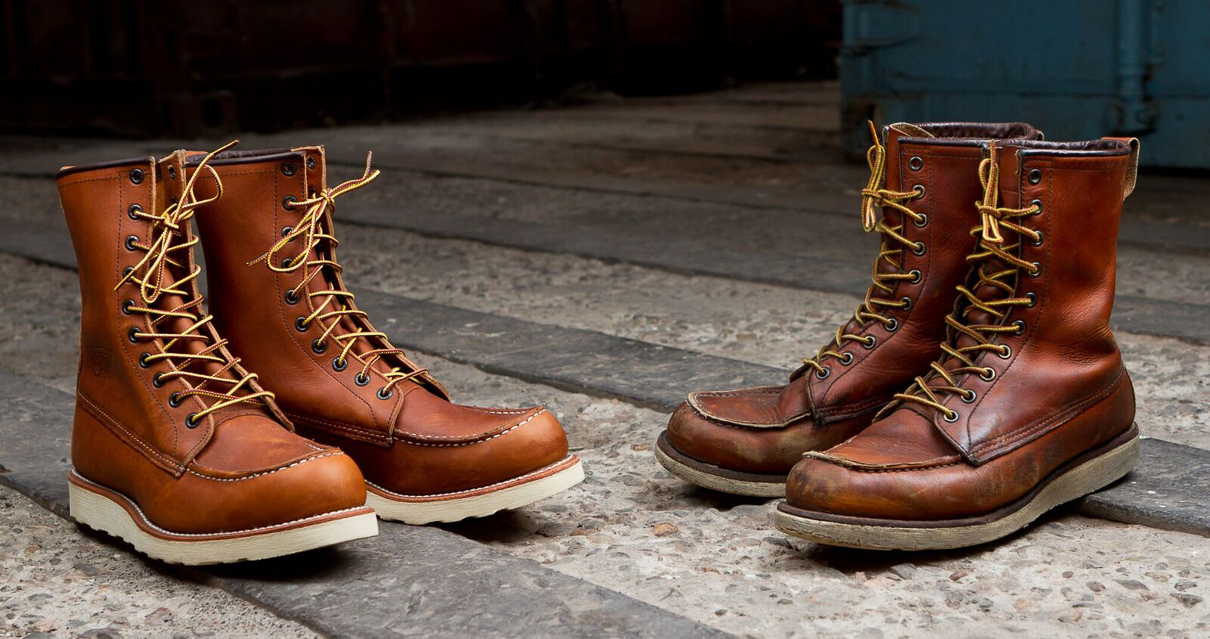
The iconic Red Wing 877 Moc Toe. Image courtesy of Red Wing Heritage.
After the War, Red Wing Shoes once again turned their attention to civvy street. In the 1950s the company boomed. Armed with what they had learned during the war and the runaway success of the “Irish Setter” 877 boot, the company was poised to make a leap forward. Outlets were opened on the West Coast of the United States and slowly moved east. Thus Red Wing Shoes gained national and then international recognition.
Diversifying the Red Wing Shoes brand
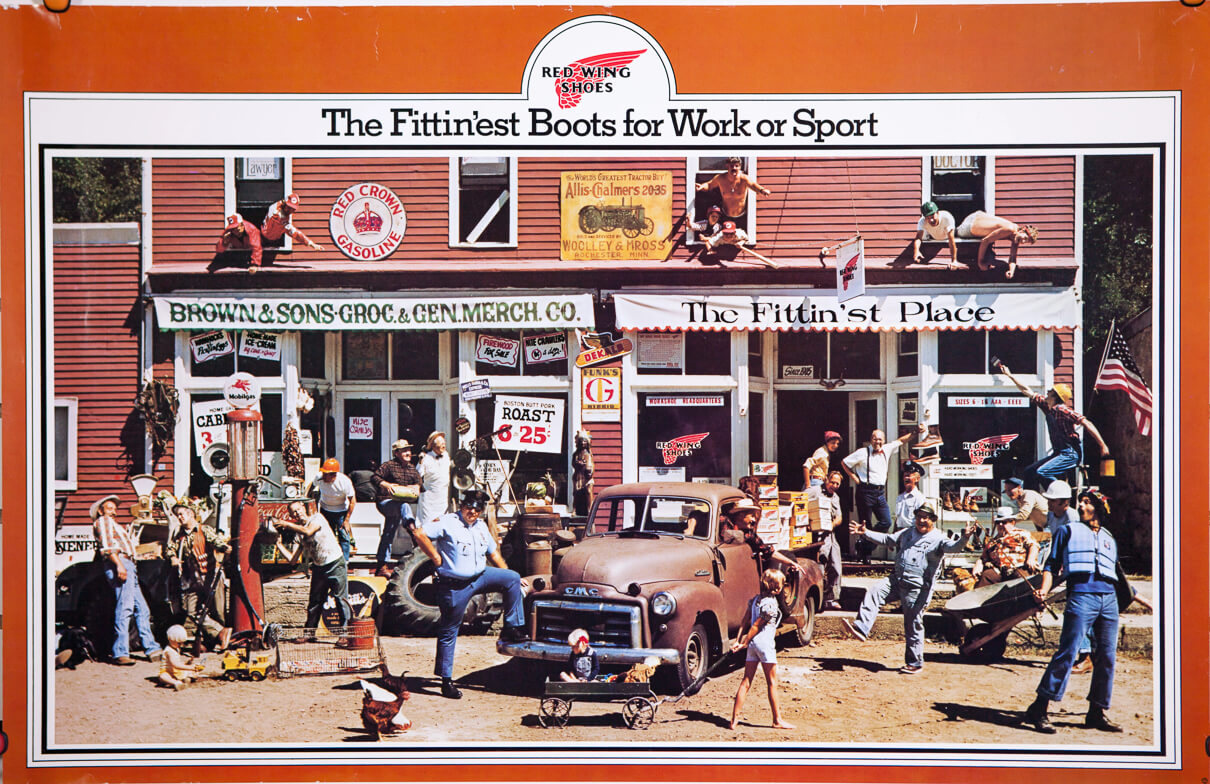
Image courtesy of Red Wing Heritage.
Over the next few decades, the company would grow and gain a reputation for quality all over the world. In the 1980s, the company started to cater to a new crowd. There was an emerging “grey collar worker” that sat alongside their established “blue-collar” customer. Subsidiaries such as Vasque catered for the growing hiking and camping trend, Irish Setter [named from the iconic 877 boot of 1950] to the hunting market and a line of women’s work shoes were also introduced.
Proudly made in the USA
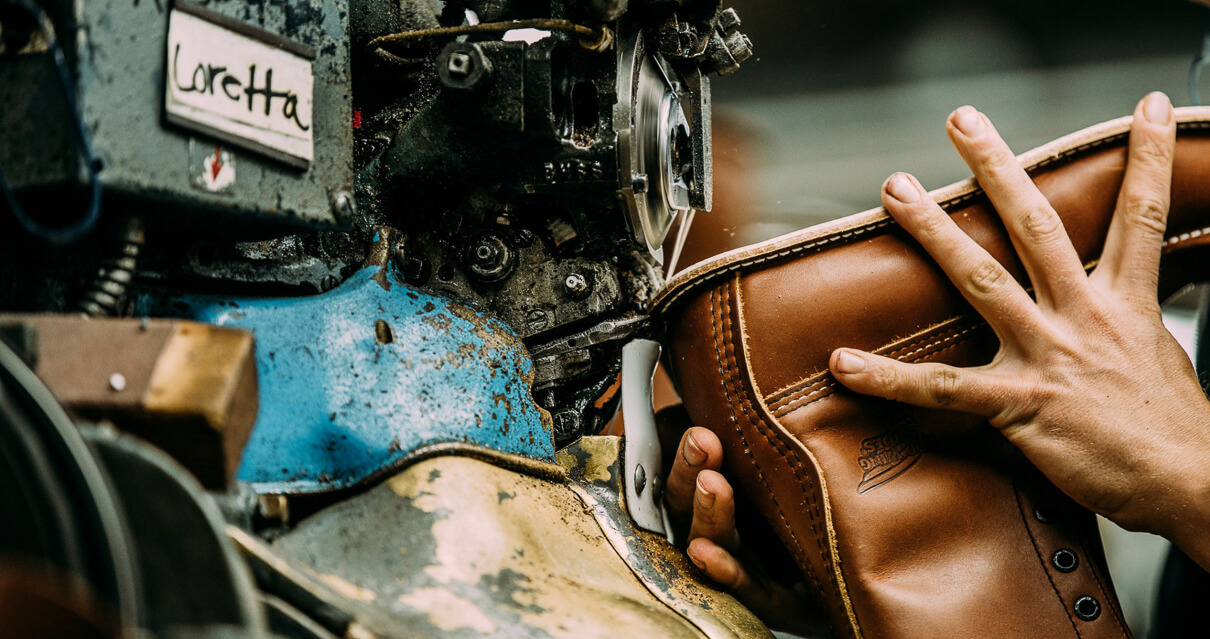
The subsidiaries such as “Red Wing Work” are mostly produced outside of the US, the lower cost of manufacturing allowing the company to explore markets that the Red Wing Shoes brand would otherwise be unable to. “Red Wing Heritage” boots and shoes, however, are exclusively produced in the United States in the two company-owned factories in the town of Red Wing and another two factories in Kentucky and Missouri.
Never forgetting their heritage
This Heritage line which includes icons such as the 877s, 875s, Iron Ranger and Beckman’s have transcended their workwear past and become staples in the fashion scene globally. The markets in Europe and Japan are booming and at times dictate what is produced and what is available in their home country. In 2016, Red Wing reintroduced their women’s line that had run since the 1920s and closed in the 50s (quite where the 1980s women’s work shoes fit into this timeline, we’ve not been able to find out).
Along with the women’s line, we have seen steady additions to the men’s line which leave us in no doubt that Red Wing have their eye firmly set on surviving another 100 years. Hipsters of 2120 rejoice!
